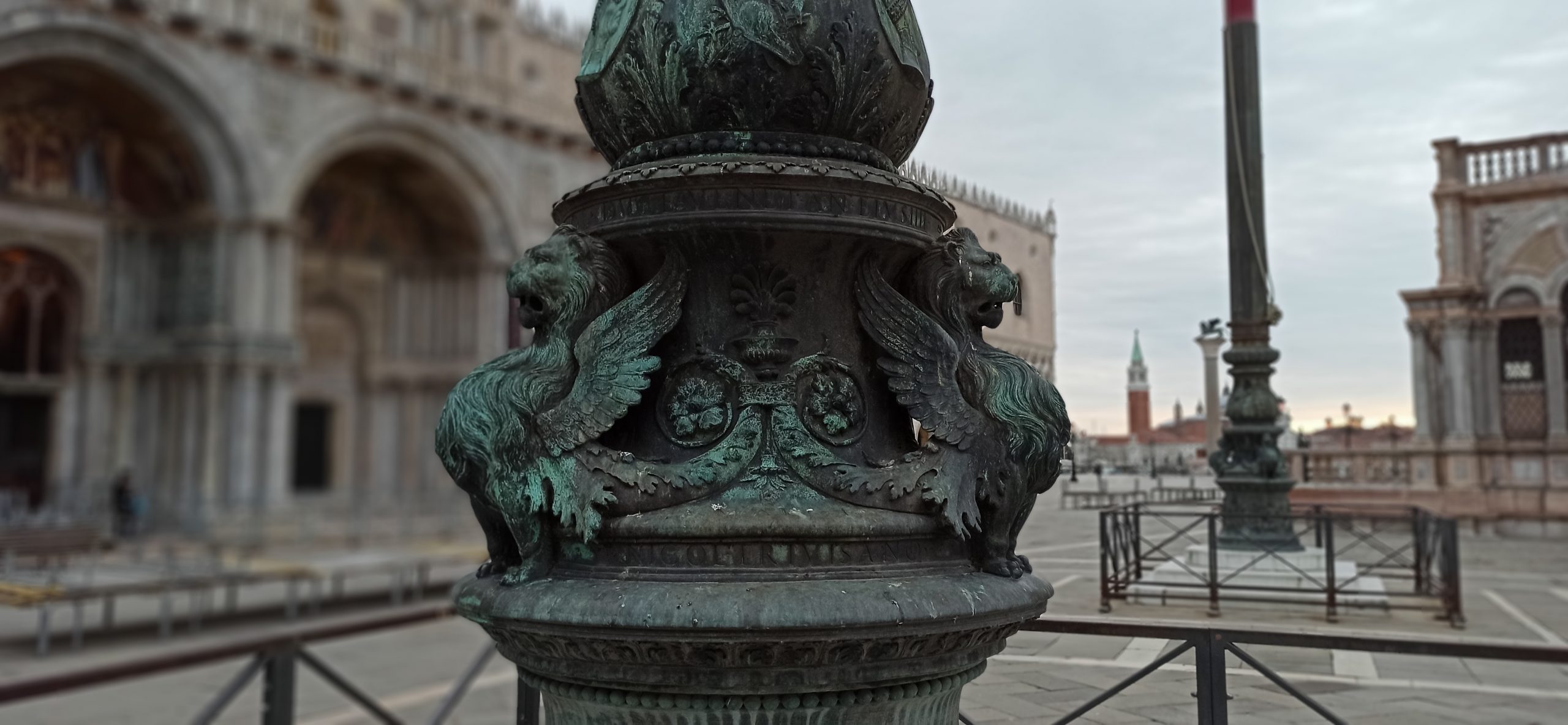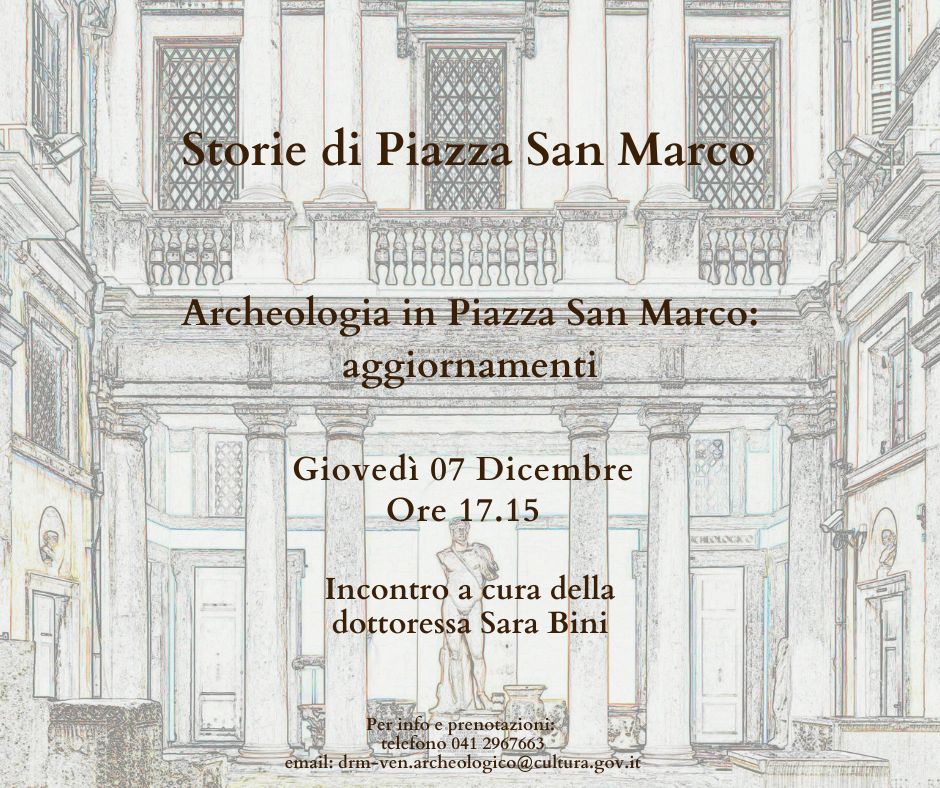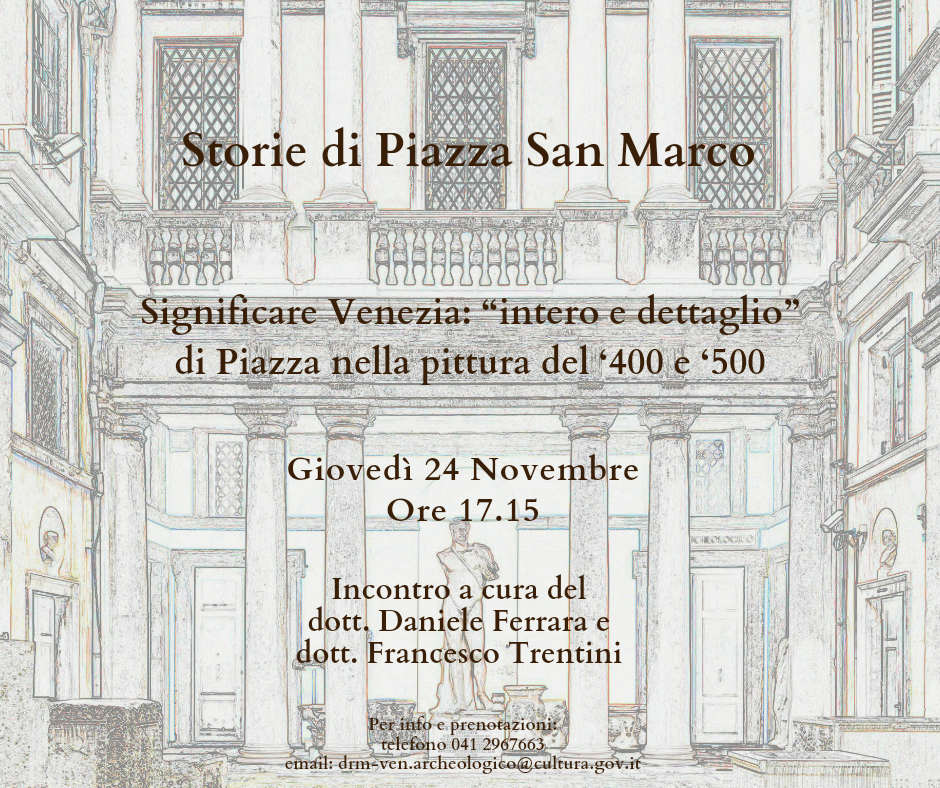
Stories of St. Mark Square
An elephant for Venice
Did you know that an elephant, complete with tusks and trunk, makes a fine show of itself in St. Mark Square? It has been there since August 15th, 1505, when the bronze banner holders, artwork by Alessandro Leopardi, were erected in front of the Basilica. At that time, they considered a significant artistic undertaking for the city the bases of the flagpoles, designed to represent through allegories the principles of the government of the Republic and, therefore, conceived to allow one to observe the images at close range. Now, mobile barriers protect them from crowds of tourists, too distracted to notice them. In this post, Stories of St. Mark Square will tell you about a work of art so exposed that it goes unnoticed and its elephant.
In 1503, the Procurators de Supra Paolo Barbo, Antonio Morosini, and Nicolò Trevisan decided to replace the old stone bases of the flagpoles with works of art in bronze. We read their names on the central one with that of the doge Leonardo Loredan. The new bases were superbly decorated with allegorical figures and inspired by the shape of the candelabra, a decorative motif widely used by Renaissance artists which drew its origin from the antiquarian culture of the early 15th century. Daniele Renier was the creator of the program of representations. The iconography expressed the founding values of the Republic: the search for mediation and a peaceful solution as a constant criterion of Venetian politics and the celebration of a virtuous State that knows how to distribute wealth.
On the base of the lateral flagpoles, you can see lions in moleca, jutting lions, and two maritime processions with Tritons, Nereids, Satyrs, and putti. They carry baskets of fruits and vegetables to remember the prosperity that the Venetians drew from the sea. The central flagpole differs from the other two, as well as for three medallions with the profile of Doge Loredan, for a more complex composition that constitutes the core of the entire program. It stages a kind of ceremonial procession, similar to those organized on the occasion of special anniversaries in Venice, with the setting up of allegorical floats on boats. Three female figures are part of it, accompanied by putti and various attributes, aboard as many ships. Marine divinities precede them, while symbolic animals – a dolphin, an elephant, and a pair of seahorses – flank them. A Nereid opens the small triumphal procession; she precedes the ship accompanied by the dolphin on which the figure of Abundance-Caritas travels. Then come a Triton who blows a horn and the second ship, that of the elephant, on which Justice – Judith is seated. A second Triton precedes the third and last ship, flanked by a pair of seahorses, on which Minerva Pacifica is to close the procession.
Daniele Ferrara interpreted the images as a «civil and political speech. All the elements build a celebration of Venice: the portraits of the doge and the names of the procurators (the vertices of the State), the lions of St. Mark», and the allegory of the city, which receives tributes from the land and the sea in the marine processions of the lateral flagpoles. «The allegories of the central banner summarize the key values of the Venetian political mentality: abundance, justice, peace as the fruits of a fundamental prudence and a virtuous attitude» that made it possible to face the dangers of the alternating vicissitudes of fortune. Therefore, the figure on the ship flanked by the elephant is an image of the Venetian Republic. It must be embodied in Justice – see the attribute of the scales – and endowed with the strength and purity of Biblical heroine Judith – see sword and severed head – to guarantee good governance. But the elephant?
Dolphins and seahorses often accompany Tritons and Nereids in the marine thiasos. More strange is to find in this context an elephant with a fishtail, also transformed into an aquatic creature. What meaning then to give to this unusual presence? In the same year, when they inaugurated the flagpoles, Aldus Manutius published a famous text by Orapollo dedicated to hieroglyphics, so much in vogue in Renaissance Venice. In their symbolism the elephant, already understood as a symbol of the fortress, is an emblem of prudence, temperance and the ability to sniff out convenient things with the trunk. «This quality, transposed from an individual to a collective dimension, becomes of great importance for the government of the State.». The animal here indicates an authority inspired by prudence and wisdom, so it accompanies the allegory of Venice, example of good government of the State.
Are you curious to discover the attributes of Abundance – Caritas and Minerva Pacifica? Why do a dolphin and two seahorses accompany them? You will be able to deepen these and other meanings next September 10th. The regional director of the Museums of the Veneto, Dr. Daniele Ferrara, will talk to us about the bronze flagpoles of the Square, guiding us in the interpretation of their complex symbolism. The appointment is part of the cycle of informal meetings in the historic courtyard of the National Archaeological Museum of Venice, entitled Stories of St. Mark Square.
MDP
For quotes and insights:
D. Ferrara, Oltre il Leone. Animali simbolici per i reggistendardi di Alessandro Leopardi in Piazza San Marco a Venezia, in Animali figurati. Teoria e rappresentazione del mondo animale dal Medioevo all’età moderna, Roma 2019, pp. 291-314; W. Wolters, Piazza San Marco a Venezia, Verona 2018, pp.61-64.
Photo credits: Luca Trolese
Saturday 10 September, 6.30 pm
Piazzetta San Marco, 17
D. Ferrara – Tall and invisible: the bronze Banner Holders of the Piazza
Reservations on 041 29 67 663




